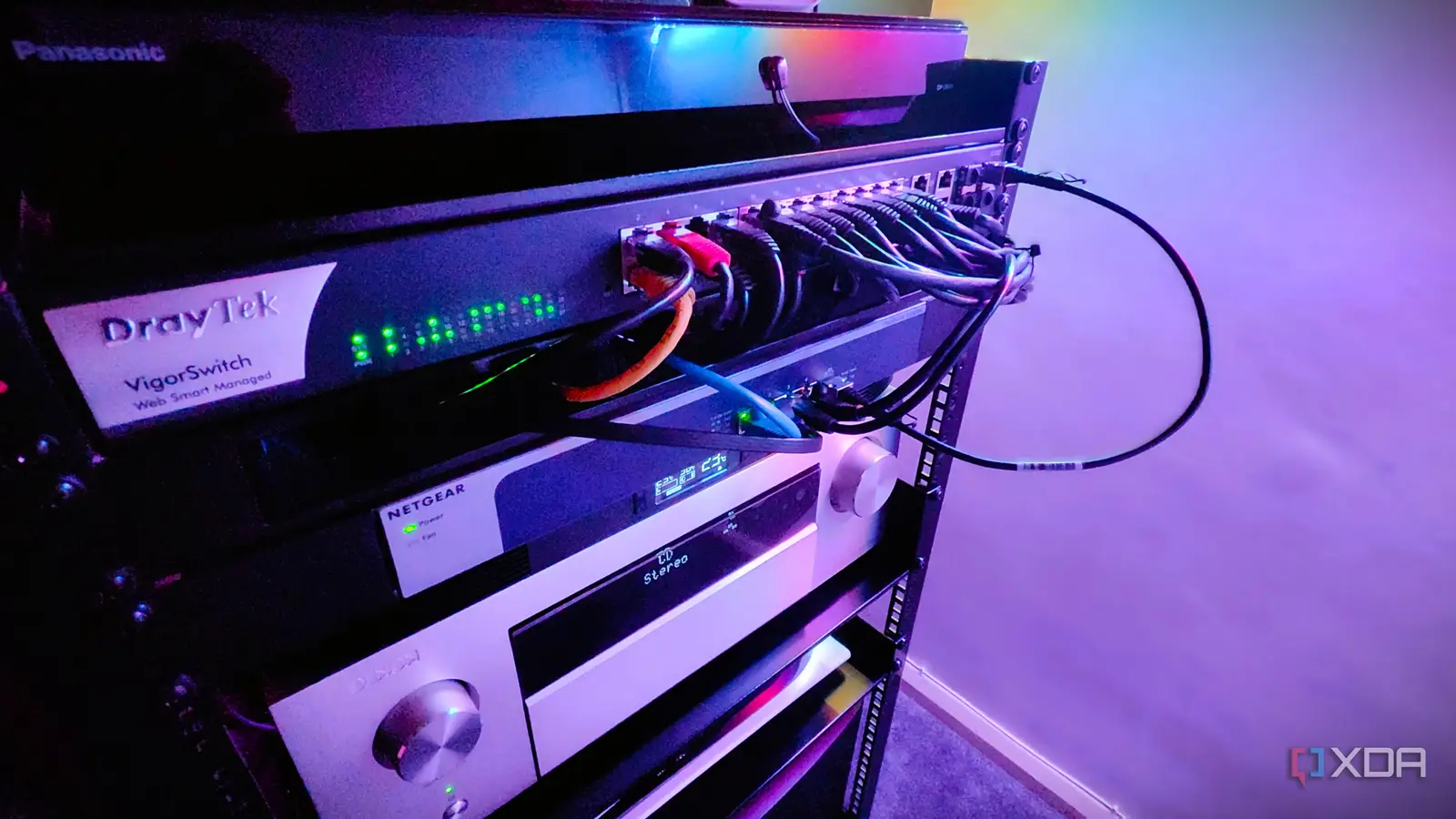
We’re big proponents of rolling your own networking with OPNsense or similar systems, but everybody has differing networking needs, and sometimes you want an off-the-shelf solution. That’s where centrally managed network systems come into play, with managed switches, access points, routers, firewalls, and other appliances with one thing in common — they all have a centralized program to manage the hardware from.
This could be app-based, cloud-based, or both, but the important part is that every piece of your network is manageable from the same dashboard. This gives you visibility on what’s going on, helps with security setup, and advanced networking features like VLANs, port isolation,, and SMB multichannel bonding, while simplifying setup considerably as you only have one place to log in. It’s a step up from a basic mesh network for home users, but the same ideas around a single management plane apply.
Xyxel Nebula Cloud
Built to last with plenty of features
Zyxel’s Nebula Cloud is perhaps the centralized management tool I know the best, and it’s been solid to use. I’ve got a hardware firewall, several managed switches, and a couple of access points all linked up, and I haven’t had any issues with the dashboard. There’s a good mobile app, AI-powered monitoring and optimization, and Zyxel has a good cadence of upgrades and feature additions. The next-gen firewall is easy to manage, but advanced features are behind a subscription.
Cloud management is free forever though, which is good to know. The paid tiers enable longer retention of logs and analytics for reporting and troubleshooting use, which is more necessary for SMB users. I can’t say I’ve missed having them while using the system at home. You also get topology visualization and automated mapping, which is an absolute winner of a feature for home lab use, and I’d recommend putting that near the top of your wish list when you go upgrading.
Zyxel USG Flex 500H
$840 $900 Save $60
Zyxel XMG1915-18EP PoE+ Managed Switch
Zyxel WBE660S Wi-Fi 7 AP
TP-Link Omada
Just enough and works with anything
Whatever your feelings are about TP-Link, its Omada networking range hits the right notes for affordability and manageability. The cloud management covers its access points, switches, and gateways; plus you can remotely provision hardware without being there. That might not be the most important feature for home use, but there’s always going to be a time when you’re not home and something either needs plugging in or fixing, and the person doing the plugging in might not be the most technical.
The cloud management system is free for the lifetime of your hardware, and you get a ton of high-end features like Wi-Fi heatmap simuation, 2FA, data separation, and advanced firewall rules and features to use. Oh, and the cloud controller has no device limit so you can go nuts with your home network.
Ubiquiti UniFi
User-friendly and stylish, but you’ll get locked into the ecosystem
It’s impossible to discuss centrally managed networking appliances without mentioning Ubiquiti. In some ways, they’re the Apple of the prosumer networking gear market, with stylish, matching network appliances and a slick interface to control them all with. While the hardware is undeniably great, the crowning gem is the software to control it all with, which can be used from the cloud, apps, or even self-hosted if you’re up to the additional challenge. You do need a cloud account even for local deployment, but that’s a small concession for how powerful the management plane is.
You get a ton of advanced niceties with your purchase, like single sign-in access globally, network topology and mapping, advanced analytics, multi-site management, and the controller also ties in the company’s cameras and every other device they sell, making it a more complete ecosystem than many of the competition. Plus, there is a thriving community that will help you if you get stuck, something that’s often missing when networking troubleshooting is frequently handled behind enterprise service contracts.
EnGenius Cloud
Gets you on your way but advanced features need a subscription
We’ve used plenty of EnGenius hardware over the years, and the cloud platform is a high point in what could be otherwise forgettable networking equipment. You get essential cloud features without needing a subscription, or you can manage each device locally, and the serverless design means it’s easier to get going. But if you want analytics, integration, and other advanced features, you must pony up for the pro tier, which has per-device licensing terms.
Maybe that’s okay for home use when you won’t have that many network appliances to manage, but some firewall, VPN, and API features are gated behind the subscription, which is disappointing to see when so many other manufacturers don’t charge for their cloud features.
EnGenius ECS1112FP
Speed
1Gb
Interface
10x RJ-45 (2 uplink), 2x SFP
EnGenius ECW526
Firewalla
This newcomer to the space is making a big splash
Firewalla might not be the first name you think of for centrally managed networking, but I haven’t used many other systems that are so tightly integrated. For a start, the firewall is also a Linux-based server with root access, meaning you can add your own networking tools if you desire. I haven’t so far, because the overall experience has been up to my needs, but it’s nice to know that’s an option when many networking systems are locked down.
When paired with the Wi-Fi 7 access points, the Firewalla system gets more granular, zero trust features that enable microsegmentation and more, all with a few taps in the app. And yes, it’ll work with other networking gear and access points, but it shines when the entire network is Firewalla equipment. The only real annoyance for me is the lack of ports on the firewall, and that the web-based version of the interface isn’t as powerful as the app, which I know some users will hate.
Firewalla Gold Pro
$889 $999 Save $110
Firewalla Access Point 7
$369 $399 Save $30
The prosumer networking segment has stiff competition
The home user’s needs differ substantially from those of enterprise IT departments deploying HPE Aruba, Juniper, or Cisco Meraki equipment. That said, when talking about centrally managed networking, it’s the same features and considerations whether you’re managing a few dozen devices or a few thousand, and the usability of the software solution is key to a smooth deployment. It’s perhaps more important to find the management plane that you are comfortable using, and build your network to stay within those constraints, than to build a powerful network that you won’t use most of the features from because the setup process is harder to conquer.



